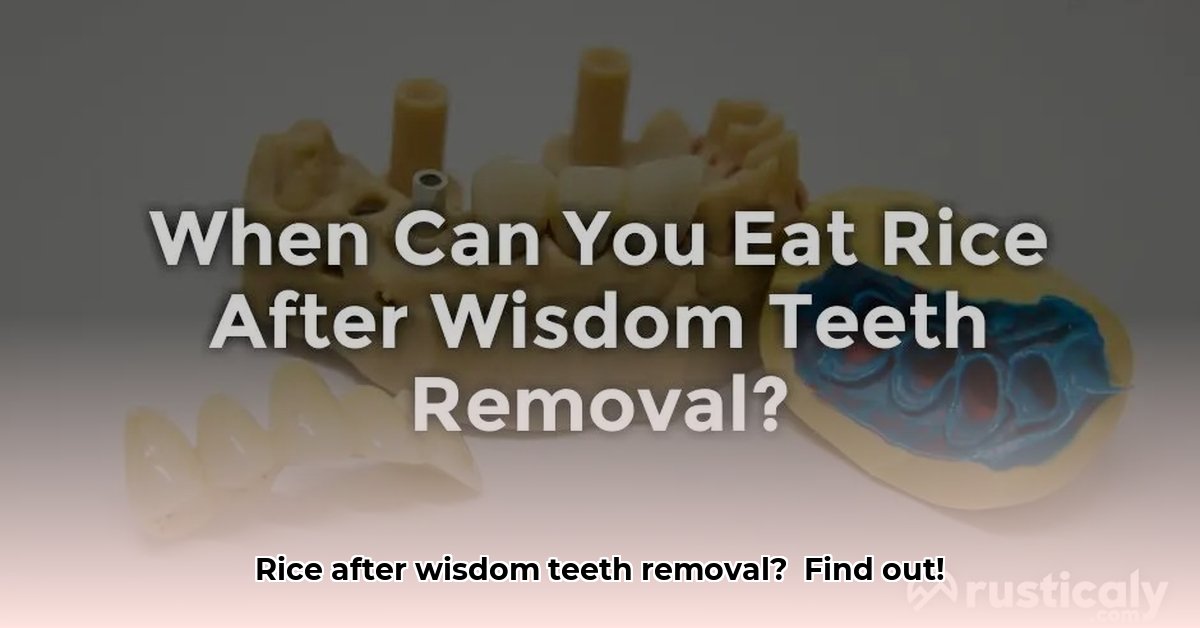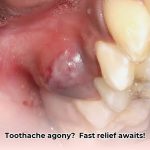Navigating Your Post-Wisdom Teeth Removal Diet: A Guide to Eating Rice
Recovering from wisdom tooth removal can be uncomfortable, and you’re likely craving familiar comforts like a warm bowl of rice. This guide provides a clear, step-by-step approach to safely reintroducing rice into your diet, easing your anxiety, and promoting a smooth recovery.
When Can I Eat Rice?
After wisdom tooth extraction, your mouth needs time to heal. A blood clot forms in the socket, essential for proper healing. Eating hard or sticky foods too soon can dislodge this clot, leading to complications like dry socket (a painful inflammation of the socket) or infection.
While everyone heals differently, it’s generally best to wait at least 5-7 days before introducing rice. Always follow your dentist’s specific instructions, as they know your individual situation best.
Choosing and Preparing Rice
Not all rice is ideal for post-extraction. Opt for easily digestible varieties that become very soft when cooked, such as:
- Jasmine Rice: Cooks quickly and becomes delightfully soft.
- Basmati Rice: Similar in texture to jasmine rice, easily digestible.
- Instant Rice: Convenient, but ensure it’s cooked to a very soft consistency.
Initially, avoid tougher varieties like brown rice or wild rice, which can irritate sensitive surgical sites. When you’re ready to reintroduce rice:
- Cook it Thoroughly: Cook the rice until extra soft and tender, almost like a creamy porridge. Overcooking is perfectly acceptable.
- Use Broth for Flavor: Enhance the flavor of plain rice by cooking it in broth instead of water, providing extra nutrients without irritating spices.
- Cool it Down: Let the rice cool completely before eating, as hot temperatures can irritate a sensitive mouth.
- Start with Small Portions: Begin with very small amounts to test your comfort level. Chew carefully, away from the extraction sites.
- Rinse Gently: After eating, rinse your mouth gently with saltwater, as directed by your dentist. Avoid vigorous swishing or spitting, which could dislodge the blood clot.
Visual Guide to Rice After Extraction
| Rice Type | Suitable After 5-7 Days? | Suitable After 2 Weeks? | Notes |
|---|---|---|---|
| Jasmine Rice | Yes | Yes | Cooks quickly and becomes wonderfully soft. |
| Basmati Rice | Yes | Yes | Similar texture to jasmine, easily digestible. |
| Brown Rice | Maybe, if overcooked | Yes | Firmer; overcooking is crucial initially. |
| Wild Rice | No | Yes, in moderation | Too firm at first; introduce later with caution. |
| Instant Rice | Yes, if cooked very soft | Yes | Convenient and easy to prepare. |
Some research suggests brown rice, while nutritious, may be more challenging to eat immediately after extraction due to its fibrous nature. Your dentist’s guidance should always take precedence.
Other Soft Food Options
Variety is important for nutrient intake during recovery. Other suitable soft foods include:
- Mashed potatoes: Creamy and comforting.
- Yogurt (plain): Smooth and a good source of probiotics.
- Scrambled Eggs: Soft and easy to eat.
- Smoothies: A great way to incorporate fruits and vegetables.
- Applesauce: Naturally sweet and gentle.
- Cream of Wheat: Easily digestible and can be made with water or milk.
- Blended Soups: Ensure they are smooth with no chunks.
Managing Potential Complications
- Food Stuck in Socket: If rice gets stuck, do not pick at it. Gently rinse with saltwater. If it persists, contact your dentist.
- Pain Management: Over-the-counter pain relievers can help, but follow your dentist’s recommendations. Cold compresses can also provide relief.
- Dry Socket: If you experience throbbing pain, a bad taste, or an empty-looking socket, contact your dentist immediately.
Returning to a Normal Diet
Gradually reintroduce other foods after a week or two, always listening to your body. If you experience discomfort, revert to softer options.
By following these guidelines and your dentist’s advice, you can safely enjoy rice and other nutritious foods as you recover. Be patient, and remember that healing takes time. This information is for general guidance only. Always consult your dentist or oral surgeon for personalized advice. They can assess your individual needs and recommend the best course of action for your specific situation.
- Benefits of Work-Life Balance Enhance Health, Happiness, and Performance - December 22, 2025
- Occupational Wellness Activities Boost Employee Well-being And Productivity At - December 21, 2025
- Occupational Wellness Examples That Enhance Your Work Life - December 20, 2025
















